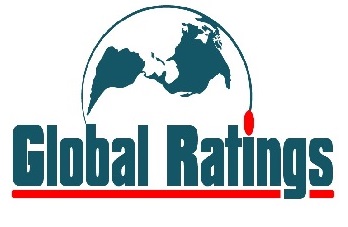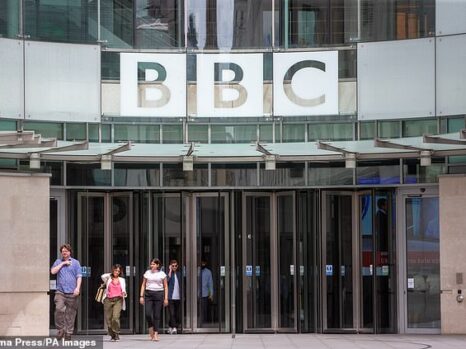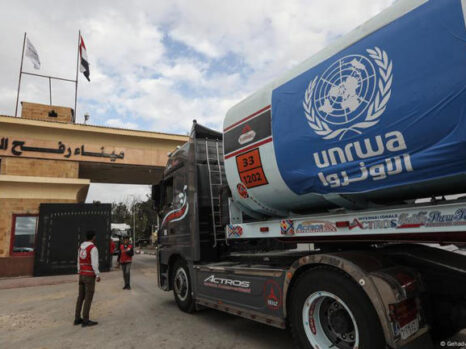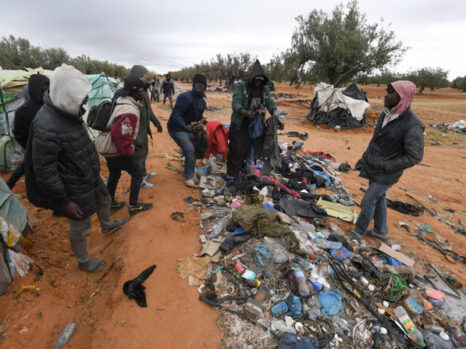The EU’s aggressive plans to stem the tide of irregular migration from North Africa have hit unexpected turbulence. Despite allocating billions of euros and crafting intricate agreements that would make any policy wonk blush, the EU finds itself grappling with a sobering reality: Key partners Egypt and Tunisia show little interest in deepening cooperation on border controls and migrant returns.
Other countries could follow suit and this unanticipated resistance, revealed in leaked EU documents, threatens to unravel the carefully constructed EU Pact on Migration and Asylum.
While Brussels touts a near-halving of Mediterranean crossings, the refusal of Cairo and Tunis to fully engage with the plans exposes the fragility of the EU’s prevailing strategy.
It might just be a negotiating strategy, as North African countries flex new-found muscles and leverage their growing influence as the new gatekeepers to “Fortress Europe.” Or it might be something more pragmatic, in terms of prioritizing Egyptian and Tunisian sovereign interests by extracting maximum benefits from this fortuitous “alliance.”
However, with the number of asylum claims in Europe potentially reaching 1 million this year, and less than a fifth percent of failed asylum seekers effectively deported, the EU’s approach faces its toughest test yet. As migration patterns shift and new routes emerge, the coming months will determine whether the bloc can salvage its external border strategy or if it must confront a fundamental rethinking of its migration policies.
The EU’s aggressive plans to stem the tide of irregular migration from North Africa have hit unexpected turbulence. Despite allocating billions of euros and crafting intricate agreements that would make any policy wonk blush, the EU finds itself grappling with a sobering reality: Key partners Egypt and Tunisia show little interest in deepening cooperation on border controls and migrant returns.
Other countries could follow suit and this unanticipated resistance, revealed in leaked EU documents, threatens to unravel the carefully constructed EU Pact on Migration and Asylum.
While Brussels touts a near-halving of Mediterranean crossings, the refusal of Cairo and Tunis to fully engage with the plans exposes the fragility of the EU’s prevailing strategy.
It might just be a negotiating strategy, as North African countries flex new-found muscles and leverage their growing influence as the new gatekeepers to “Fortress Europe.” Or it might be something more pragmatic, in terms of prioritizing Egyptian and Tunisian sovereign interests by extracting maximum benefits from this fortuitous “alliance.”
However, with the number of asylum claims in Europe potentially reaching 1 million this year, and less than a fifth percent of failed asylum seekers effectively deported, the EU’s approach faces its toughest test yet. As migration patterns shift and new routes emerge, the coming months will determine whether the bloc can salvage its external border strategy or if it must confront a fundamental rethinking of its migration policies.
It is premature to predict whether the disinterest displayed by Tunis and Cairo might force the EU to reevaluate its reliance on external partnerships. After all, without Egypt and Tunisia on board, the bloc faces a geographic and strategic gap in its “buffer zone” strategy that leaves southern Europe exposed and risks political upheaval. The knock-on effects could see Europe and North Africa back at square one, with images of overcrowded boats, overwhelmed coastguards and surging migrant death tolls dominating the narrative.
Worse, any vacuum left by the withdrawal of Egyptian and Tunisian cooperation is ripe for exploitation. Whether the culprits are the human traffickers who thrive on instability, or corrupt officials who might see this as an avenue for illicit gain, the situation could easily deteriorate.
This is yet another indictment of the EU’s insistence on externalizing its border issues without installing adequate oversight mechanisms, even amid credible allegations that funding from Brussels is fueling rampant rights abuses and corruption.
Europe therefore faces a critical decision in the coming months: adapt or persist. Continuing with the present strategy without the involvement of third-party countries would be tantamount to ignoring the glaring cracks in its preferred migration management strategies.
Yet, reversing course is not as simple as tearing up the pact and starting anew. The EU must consider a multipronged approach that emphasizes robust oversight and genuine collaboration over coercion. Investment in joint projects that offer significant economic incentives and ensure mutual benefits could create a more stable framework for partnerships.
In tandem, there is also a pressing need for deep introspection within the corridors of the EU. Policymakers must grapple with the moral dimensions of any planned strategies, recognizing that the real solutions lie in addressing the root causes of migration — conflicts, economic disparities and climate change — rather than simply shifting the burdens onto third-party countries.
Will the EU adapt to the shifting dynamics and rethink its approach to emphasize sustainable and ethical solutions, or will it double down on a fraught path that risks perpetuation of the very problems it seeks to solve? The answer to this question will not only shape the future of the bloc’s migration policy but also its standing and moral authority in a volatile world.














